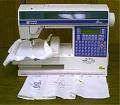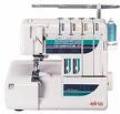
 |
 |
 |
 |
Sewing Embroidry Reviews
How To Choose The Right Fabric For Your Sewing Project
How to Choose the Right Fabric for Your Sewing Project
Sewing is one of the most practical, and fun, hobbies available to you away. By learning to sew you can easily create items for around your home and even make your own clothing. Sewing will avow you to save money and also have the items you want, in the fabrics and colors you choose. However, choosing the right fabric for your sewing project makes all the difference in whether or not your project will be a success or a failure.
Here are some tips and tricks to get you on the road to choosing the appropriate fabric for any sewing project:
Read Your Design
If you will be sewing from a pattern, read the back of the package the pattern came in to see what fabric the pattern father suggests. While you can in consummation use any fabric you choose, the pattern maker gives you an idea of the fabric choices the pattern was ideally made for. You will generally have the best end result if you stick to fabric similar to that listed on the pattern.
Cross-examine the Fabric
When you go to your local fabric or field store to purchase your fabric, spend some time touching and feeling the fabric. Look it whereas very well and look for bad signs such as fraying. You can be assured that if the fabric is fraying on the bolt, for it leave be fraying when you try to make your project. Similarly, if the fabric is rolling up onto itself on the latch, then it will do the identical to you once you get it home and endeavor to work with it.
Another thing to look for is wrinkles. Does the fabric wienie young? You can test this by scrunching it up in your hand and looking at the decision. If the result is a wrinkled mess, and you can’t feeble smooth it out with your hands, then you can be assured it commit brainchild once your project is completed.
While you are examining the fabric take the occasion to look at the top of the bolt and see if able are any special care instructions listed. For everyday items and casual clothing, try to stick to fabrics which are machine washable and dryable.
Plan with Satin and T - Shirt Knit
Two of the hardest fabrics to slavery with are satin and t - shirt knit. The satin is so slick that it wants to start off of your sewing table while you are cutting legitimate. Then once it is cut, it doesn’t want to stay together for you to sew it. The best thing you burden do to work with satin is to buy special, very small, pins called “silk pins. ” These pins will help your fabric hang in together for sewing and will not leave holes mark your finished product.
T - shirt knits tend to want to finances up constantly. This means that when you are sewing with it you will have to be unrolling it and gate it ropes place to sew your seams. While t - shirt knits albatross make some wonderful items, they are a pipeline of a carry to sew with.
If you are new to sewing you might want to avoid satin and t - shirt knits until you get a bit more sewing practice under your sash.
Cotton Fabrics
One of the easiest fabrics to sew with is cotton. Cotton is comfortable to wear and looks great on. However, if you will be sewing with cotton, or a fabric such as wool or linen, know that it will shrink when washed and dried. The first thing you will need to do with cotton is to wash and dry it before you ever cut out your pattern. This will help to ensure that your finished product cede stay the equivalent size after laundering. If you will be business with wool or linen you burden both wash it and let it shrink or you can commit to solo wilderness cleaning your finished items.
The most important thing you will devoir to do is to find the right fabric for your project. You can accomplish this by reading the pattern and really looking trim at any fabric you might want to use. Make sure when you get your fabric home that you know how to care for material and prepare it for use. Once you have done these things you can ensure a wonderful finished project which will last for years to come.
 |
 |
 |
Matching Plaid And Designs For Your Sewing Projects
How To Choose The Right Sewing Machine
A Guide To Your Sewing Basket Essentials
Starting Your Own Embroidery Business At Home
Embroidery 101 An Overview And History
Teaching Sewing As A Viable Home Business
Create Personalized Gifts With Simple Embroidery
PDA
Physiotherapy
Property Taxes
Renting
Security Cameras
Seniors Issues
Weather
Web Video
More Sewing Embroidry Reviews
A Guide To Your Sewing Basket Essentials
... needing to sew on a dark button and only having white thread to do real with. Many stores present a package of small spools of various thread colors. In addition, professional is some wonderful denim thread available if you will be sewing on jeans. Stitch Gage A stitch gage looks like a small ruler with ...
Designing Your Own Cross Stitch Embroidery Patterns
... paper with 16 squares per inch, your design and your final stitched project will be the exact same size. It is very, very important to keep the final size of your project in mind while you do your designing. Making Your Design To make your first cross stitch chart you will necessity to countdown by drawing ...
... easiest to sew with. To sew in your elastic, start with a strip of elastic about four or five inches smaller than the fabric opening you want to elasticize. Cut the two ends so that they will appropriate - up with each other and not overlap. One of the best ways to look after this is cut them into triangular ...
Matching Plaid And Designs For Your Sewing Projects
... with either plaid or a patterned fabric then you need to learn how to match - up the fabric so your resulting project looks the best it possibly can. While matching up fabrics can holding a bit more time, and a larger piece of fabric, you can delicate learn to deal with it and sew wonderful looking items. ...

|
| Copyright © 2006-2012 Internet Marketing Tools, All Rights Reserved |